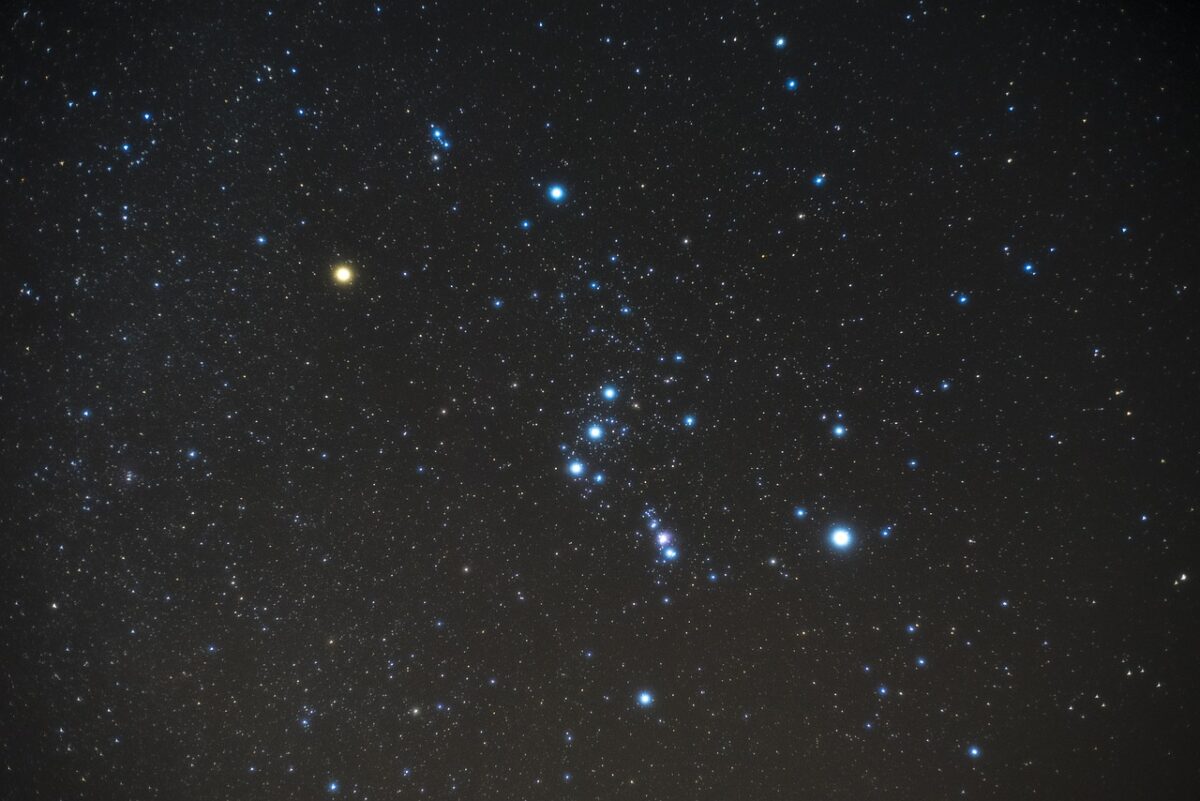One of the most complicated natural objects on Earth is the human brain. The more you learn about it, the more amazing it becomes. Think about it. Our existence as we know it – thoughts, emotions, memories – are all a result of complex network of neurons. This gives rise to what neuroscientist V. S. Ramachandran calls the “qualia” – a subjective experience that cannot be communicated. That’s why we have so much difficulty in describing exact colours. My red is not the same as your red. This becomes more complicated as the experiences become more complex than simply identifying a colour – watching a movie, listening to music or tasting food. With complex experiences, memories come into play, along with myriad cultural experiences. Many people get upset if someone does not like the same movie or book as they do. What I find more interesting is the fact that we do have so many similar tastes in spite of our individual qualia.
It all stared when I saw this tweet on the Orion constellation.

What follows is my qualia – memories, thoughts, emotions – about the Orion, described to the best of my ability.
In hindsight, I find it fortunate that I grew up in a place called Deccan College in Pune, India. My surroundings were full of nature – trees, insects, birds, small animals and night sky. It is a place where a very small part of the movie Gandhi was shot, the scenes where Gandhi (Ben Kingsley) and Charles Freer Andrews (Ian Charelson) first meet. I still find it amazing that the great Ben Kingsley walked the same ground where I played as a kid!
There was little entertainment in those days. Television programs used to be just for a few hours every day. Power cuts were frequent so that at night, with everything dark, the thing to do was to go outside and watch the amazing night sky in its full glory. My first memory of the Orion was to shine a torch in its direction and think about how long it will take for the light to reach it. Was this because I learned about the speed of light at school? I don’t remember.
According to the most popular interpretations in the West, the Orion as a hunter depicts the warrior with a weapon and shield. One of the Indian interpretations of the Orion is still about hunting but the main character is a deer. The four bright stars denote four legs of the deer and the small star cluster inside the rectangle denotes its head. The three stars in a straight line are an arrow that is embedded in the stomach of the deer. And if you extend this arrow, you encounter the brightest star in the sky, Sirius, who is the hunter. The constellation is called Mriga, that means deer in Sanskrit.
The Orion constellation has great cultural significance in India. When the Sun enters the Orion in the first week of June, the monsoon season starts. After four months of scorching summer, rains are not only welcome but they are quite literally the lifeline of the continent. I always find it fascinating how the collective qualia for rain differs in the East and the West. Rain means joy, cause of celebration in the east and this image is pervasive in Indian culture in songs, literature, and movies. In the West, rainy sky denotes sadness, gloom, and despair. So whenever I watch a sad scene in a Hollywood movie with overcast skies, I find the image distinctly discordant. Similarly, in the end when I see a clear sky with happy ending, that feels underwhelming. Indians see clear blue skies with the Sun shining all the time; we have lost the ability to appreciate it.
Watching the brightest star in the sky on a clear, dark night with little light pollution can be an amazing experience. I am fortunate to have experienced countless such nights. Sirius became my favorite star. I would search for it every night, unless Jupiter or Venus were also present. Trying to catch Mercury just after sunset was a thrilling game. Later I learned that Sirius is a binary star, the bright one is Sirius A that is revolving around a faint white dwarf, Sirius B.
A high point of my amateur stargazing career came when the only Indian television channel Doordarshan, decided to telecast Star Trek every Sunday morning. This added the much needed colour and imagination to my stargazing. Occasionally, I would spot a lone star traveling across the sky, most probably a communication satellite and I would imagine that it was the USS Enterprise with Kirk and Spock on board.
Could they beam me up, please?



